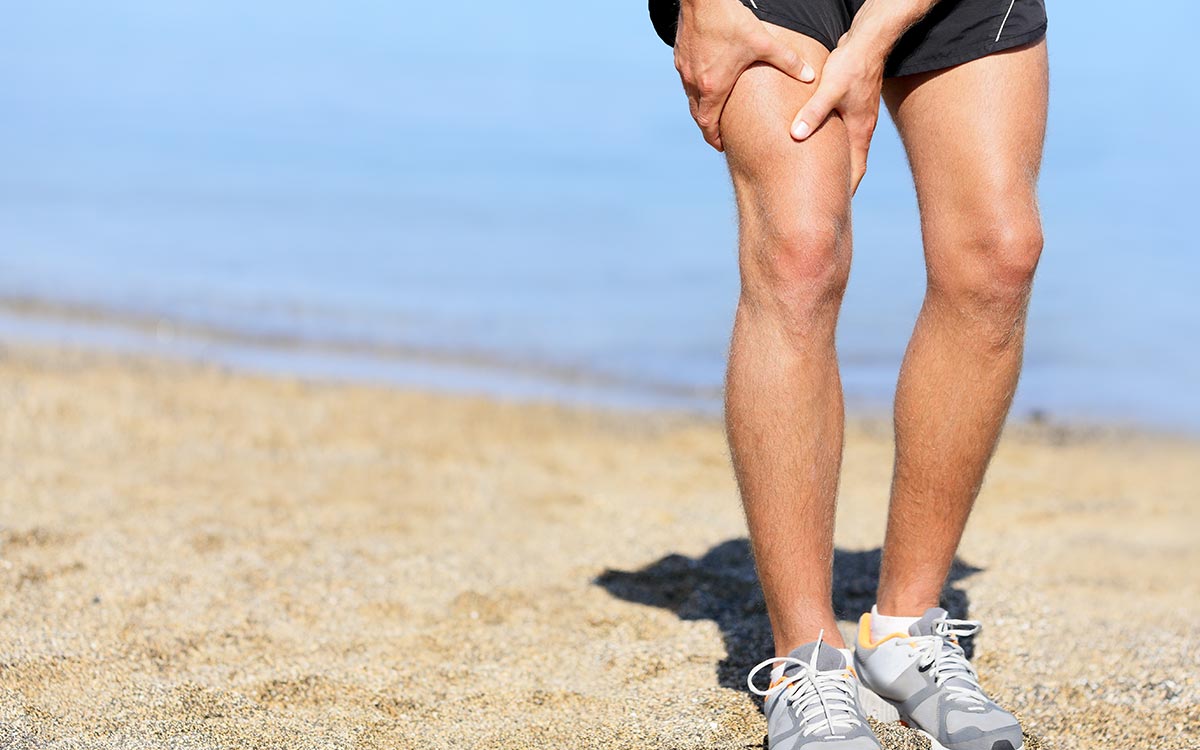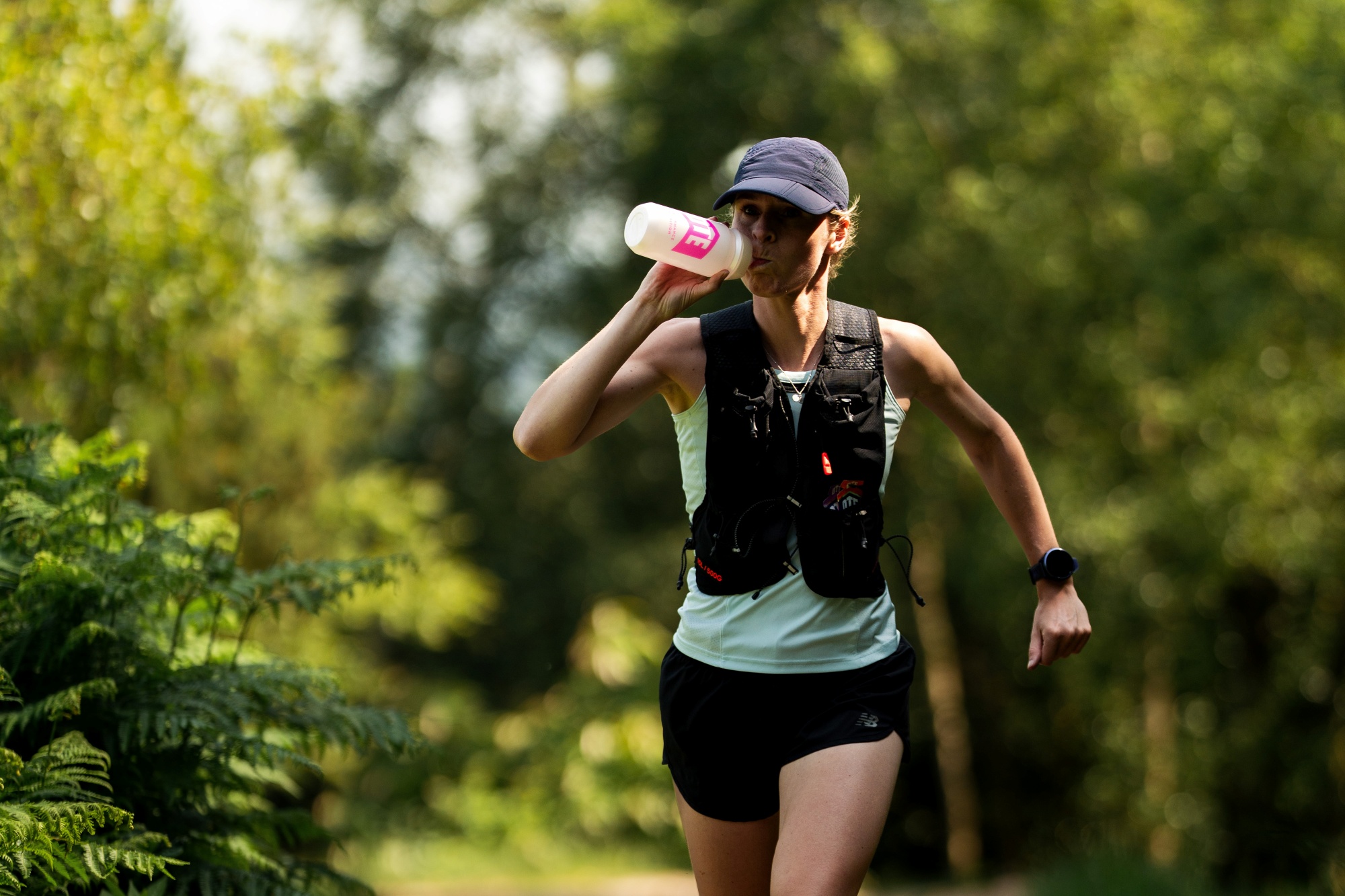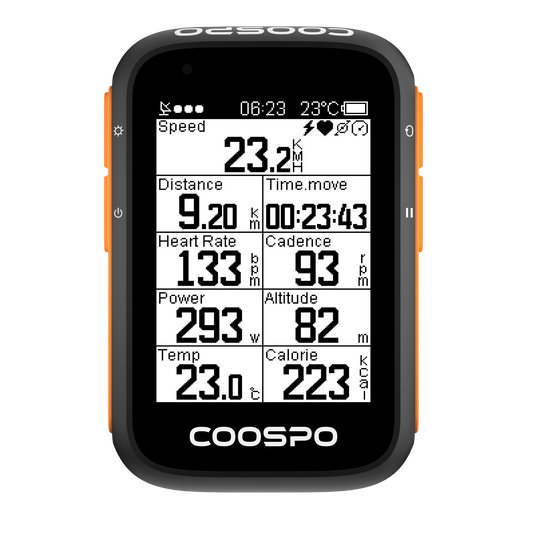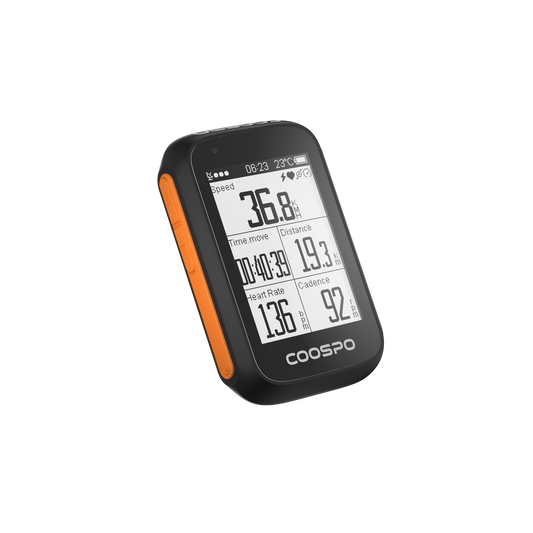Correr enquanto está dolorido: quando empurrar e quando descansar
Se você saiu para correr e acordou no dia seguinte com uma sensação de peso e dor nas pernas, saiba que não está sozinho.
Essa dor muscular é apenas um dos resultados do seu treino intenso e pode, na verdade, indicar que você está ficando mais forte, mesmo que esteja se sentindo um pouco desconfortável.

A questão é: você deve continuar correndo quando sente dores musculares? A resposta curta é: depende. Depende da intensidade da dor, do tipo de dor, de como seu corpo está se sentindo e de como você gerencia seu treinamento. Neste artigo, vamos explorar quando é aceitável (ou até benéfico) correr com dores musculares e quando é melhor descansar ou mudar sua rotina. Também vamos analisar as causas das dores musculares e compartilhar algumas dicas para ajudá-lo a correr com mais conforto quando estiver sentindo dores.
Você deve continuar correndo mesmo com dores?
Sim, você pode continuar correndo mesmo se estiver com dores. Embora a dor possa tornar a corrida desconfortável, isso não significa que você precise parar.
Todos os corredores sentem alguma dor muscular, especialmente se estiverem tentando correr distâncias maiores ou mais rápido. Isso acontece porque o exercício causa microlesões nas fibras musculares, o que leva à dor.

A dor muscular tardia (DOMS, na sigla em inglês) ocorre após o exercício e pode durar de 12 a 48 horas. Embora a DOMS possa tornar a corrida dolorosa, correr levemente quando estiver com dor pode ajudar a aliviar o desconforto e até mesmo melhorar seu desempenho.
Essas evidências sugerem que correr com dores musculares pode ser aceitável, mas a decisão de fazê-lo depende da causa da dor e da intensidade dela.
Se você estiver sentindo dores, pense em como está correndo. Se a dor estiver afetando sua corrida, é melhor fazer uma pausa ou escolher um exercício diferente para o dia.
Correr com muita dor muscular pode causar mais microlesões e inchaço, o que pode levar a mais dor ou até mesmo a uma lesão.
O que causa a dor?
A dor muscular que geralmente começa de 24 a 72 horas após o exercício é chamada de Dor Muscular de Início Tardio (DOMS, na sigla em inglês). Essa dor costuma ocorrer quando você exige mais dos seus músculos do que o normal, como correr distâncias maiores, subir ladeiras íngremes, correr mais rápido, experimentar trilhas novas ou fazer exercícios que alongam os músculos enquanto eles estão sendo trabalhados.
Aqui estão alguns dos principais mecanismos e fatores desencadeantes:
- Microdanos às fibras musculares e ao tecido conjuntivo: O músculo se alonga sob carga e sofre pequenas rupturas e rupturas estruturais, o que desencadeia a dor.
- A resposta inflamatória: Após a microlesão, seguem-se a inflamação e a ativação enzimática, que sensibilizam os receptores da dor e causam inchaço, rigidez e redução da amplitude de movimento.
- Contrações excêntricas (correr em declives, desacelerar, caminhar em declives) parecem ser especialmente propensas a desencadear DOMS (dor muscular tardia).
- Alterações no treino: Um aumento repentino no volume, ritmo ou elevação; ou uma mudança no terreno ou no calçado. De acordo com o Dr. John Vasudevan (em entrevista à Runner's World), "a dor muscular, em sua essência, significa que seus músculos não conseguem acompanhar a demanda imposta a eles... mudanças no seu treino, como aumentar o ritmo ou a distância, ou mesmo uma mudança no terreno ou na elevação, podem causar dores musculares."
- Recuperação insuficiente, nutrição inadequada, hidratação insuficiente ou eliminação deficiente de resíduos também podem contribuir.
É importante distinguir a dor muscular "normal" após o exercício daquela que indica um sinal de alerta ou lesão. Por exemplo, se a dor melhorar durante a corrida, for difusa e afetar ambas as pernas igualmente, pode ser apenas uma adaptação. Mas se você sentir uma dor aguda e localizada, ou se um lado estiver claramente pior do que o outro, ou se a dor piorar durante a corrida, esses podem ser sinais de lesão.
Além disso: uma revisão sistemática de distúrbios musculoesqueléticos relacionados à corrida constatou que 70-80% das lesões em corredores resultam de sobrecarga. (em vez de trauma agudo) — o que significa que o estresse acumulado gradualmente (e a recuperação insuficiente) costuma ser a causa.
Dado isso, quando você está com dores musculares, a verdadeira questão não é simplesmente "posso correr?", mas sim "quão dolorida estou, que tipo de dor é essa e como devo me adaptar para não passar da adaptação para uma lesão?".
Como tornar a corrida mais confortável quando se está com dores musculares?
Se a dor for leve, mesmo em ambos os lados, estiver melhorando e não afetar sua maneira de andar ou correr, geralmente não há problema em correr (ou fazer uma corrida leve). Na verdade, isso pode ajudar a melhorar o fluxo sanguíneo e auxiliar na recuperação.
Aqui estão algumas estratégias para tornar a corrida com dores musculares mais confortável — e mais inteligente.
1. Hidrate-se e abasteça-se
Uma alimentação inadequada pode causar dores musculares após o treino, pois pode levar à desidratação e à deficiência de nutrientes importantes, como antioxidantes, presentes em frutas e verduras. Esses nutrientes ajudam a combater o estresse e a inflamação que podem ocorrer após o exercício. Por isso, é importante ter uma dieta equilibrada com frutas, verduras, grãos integrais e proteínas, todos essenciais para a recuperação muscular dos corredores.

Corredores precisam de um bom equilíbrio entre carboidratos e proteínas para repor as energias e se recuperar após os treinos. Se você não consumir proteína suficiente, seus músculos não terão um bom desempenho durante o exercício e não se recuperarão adequadamente depois.
2. Alongue-o
Alongamentos, exercícios de mobilidade e movimentos leves podem ajudar a manter as articulações flexíveis, melhorar o fluxo sanguíneo e diminuir a rigidez. Embora alongamentos estáticos isolados não eliminem completamente a dor, combinar alongamentos com movimento ou realizá-los após o aquecimento pode ajudar a aliviar os sintomas.
Mesmo um alongamento leve após a corrida pode ajudar você a se sentir mais relaxado.
Um aquecimento dinâmico antes da corrida (especialmente quando se está com dores musculares) pode ajudar a preparar os músculos e reduzir o impacto.
3. Concentre-se em corridas fáceis
Não se esqueça de incluir dias de treino leve na sua rotina. Essas corridas leves ajudam na recuperação após treinos mais intensos. Elas podem aumentar o fluxo sanguíneo para os músculos, relaxá-los e até mesmo fazer você se sentir melhor por um tempo.

Para que suas corridas leves sejam realmente fáceis, tente manter seu esforço em um nível de 5 ou 6 em uma escala de 10. Isso significa que você deve estar entre 60% e 70% da sua frequência cardíaca máxima, o que é considerado a zona 2. Para monitorar isso com precisão, use um dispositivo confiável como o [nome do dispositivo/aplicativo]. Monitor de frequência cardíaca Coospo Pode ajudar você a se manter na zona ideal. Além disso, ao aumentar a distância da sua corrida, faça-o gradualmente, seguindo a regra dos 10%. Isso ajuda a evitar dores musculares, impedindo o aumento da distância muito rapidamente.
4. Treinamento cruzado
Se correr for muito desgastante para o seu corpo, experimente outras atividades como ciclismo, natação, uso da elíptica ou caminhada rápida. Essas opções permitem que você se exercite sem o estresse da corrida, ajudando você a manter a forma e permitindo que os músculos doloridos ou em recuperação descansem.
O treinamento cruzado também pode ajudar a manter o estímulo aeróbico sem sobrecarregar os músculos já "sensíveis", permitindo a recuperação.
5. Mude o terreno
Para evitar lesões musculares, varie a forma como se exercita. Se costuma correr em superfícies duras como asfalto, experimente correr em terrenos mais macios, como trilhas ou grama. Se treina frequentemente em terrenos planos, evite subidas íngremes ou escadas quando estiver com dores musculares.
Pesquisas mostram que correr em declives pode aumentar os danos musculares e reduzir a força devido à forma como os músculos se alongam durante a corrida.Isso significa que, se você já estiver sentindo dores musculares, correr em trilhas íngremes ou em declive pode piorar a situação em vez de ajudar na recuperação.
Ao optar por terrenos mais suaves, você reduz o esforço excêntrico e o impacto, ajudando você a correr com menos riscos.
6. Massagem, imersão ou rolo de espuma
Técnicas de recuperação como o uso de rolos de espuma, massagens suaves ou banhos mornos (ou banhos de contraste) podem ajudar a aliviar a dor, melhorar a circulação e promover o relaxamento dos músculos tensos.

- O uso do rolo de espuma pode ajudar a reduzir os sintomas da dor muscular tardia (embora não a elimine completamente). O resumo da Wikipédia sobre dor muscular tardia observa que a prática contínua de exercícios pode suprimir temporariamente a dor por meio da analgesia induzida pelo exercício.
- Terapia com calor ou contraste: Algumas fontes sugerem que a aplicação de calor após o exercício pode reduzir a dor muscular e que o movimento ajuda a aliviar a dor.
- Embora essas estratégias não substituam uma programação inteligente, elas ajudam você a se sentir melhor e podem acelerar uma recuperação confortável.











